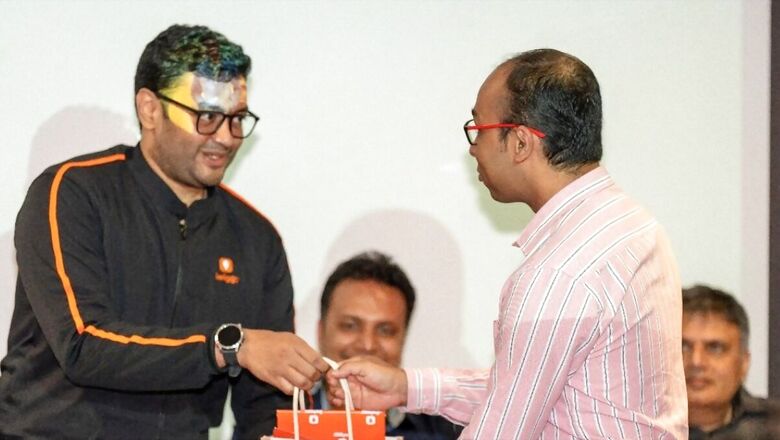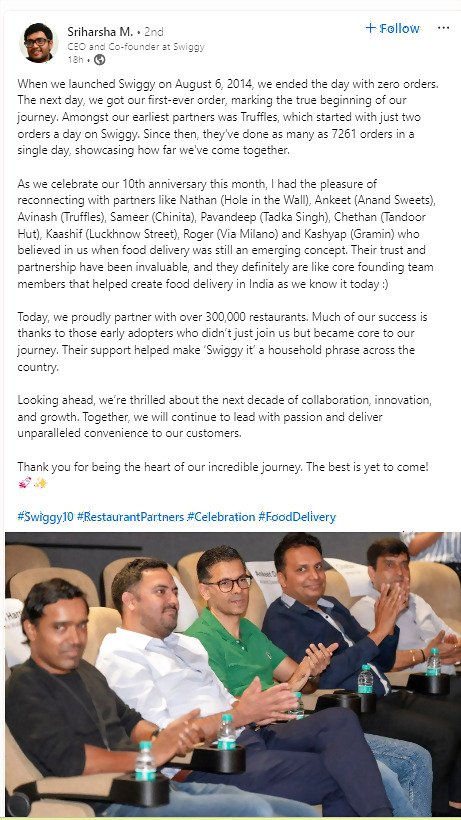
views
Swiggy’s rise to prominence serves as a shining example of successful entrepreneurship in India. Starting with humble beginnings in 2014, the company has grown into one of the country’s leading food delivery platforms. Over the years, Swiggy expanded its reach to numerous cities and ventured into on-demand grocery, package and liquor delivery. As Swiggy celebrates its 10th anniversary this year, co-founder and CEO Sriharsha Majety reflected on the company’s journey, highlighting the challenges they faced in the early days.
On Tuesday, Sriharsha Majety shared a long post on LinkedIn and expressed gratitude to everyone who has been an integral part of his Swiggy family. In the post, he also recalled receiving zero orders on the first day of launch and wrote, “When we launched Swiggy on August 6, 2014, we ended the day with zero orders. The next day, we got our first-ever order, marking the true beginning of our journey. Amongst our earliest partners was Truffles, which started with just two orders a day on Swiggy.”

Observing the company’s 10th anniversary this month, Majety thanked all the partners who believed in Swiggy when food delivery was still an emerging concept. “Their trust and partnership have been invaluable, and they definitely are like core founding team members that helped create food delivery in India as we know it today,” he added.
Swiggy now partners with over 300,000 restaurants, a milestone that co-founder and CEO Sriharsha Majety attributes to the early adopters, who supported the company from the beginning. Celebrating the achievement, many LinkedIn users congratulated Majety on this significant milestone. Founded in 2014, Swiggy has reached a valuation of USD 12.7 billion as of April 10, 2024, according to a Business Today report.
Swiggy’s 10th anniversary coincides with its preparations for a stock market debut this year. With rival Zomato already in the market, Swiggy’s CEO Sriharsha Majety commented on the challenges and benefits of having a listed competitor at the Moneycontrol Startup Conclave. He noted, “Having a listed competitor is both good and bad. We don’t have to explain what on-demand is, what the gig worker economy means, and what hyperlocal is—all of these are the positives. The negative is that quarter-on-quarter you are going to be compared on the trajectory.”




















Comments
0 comment